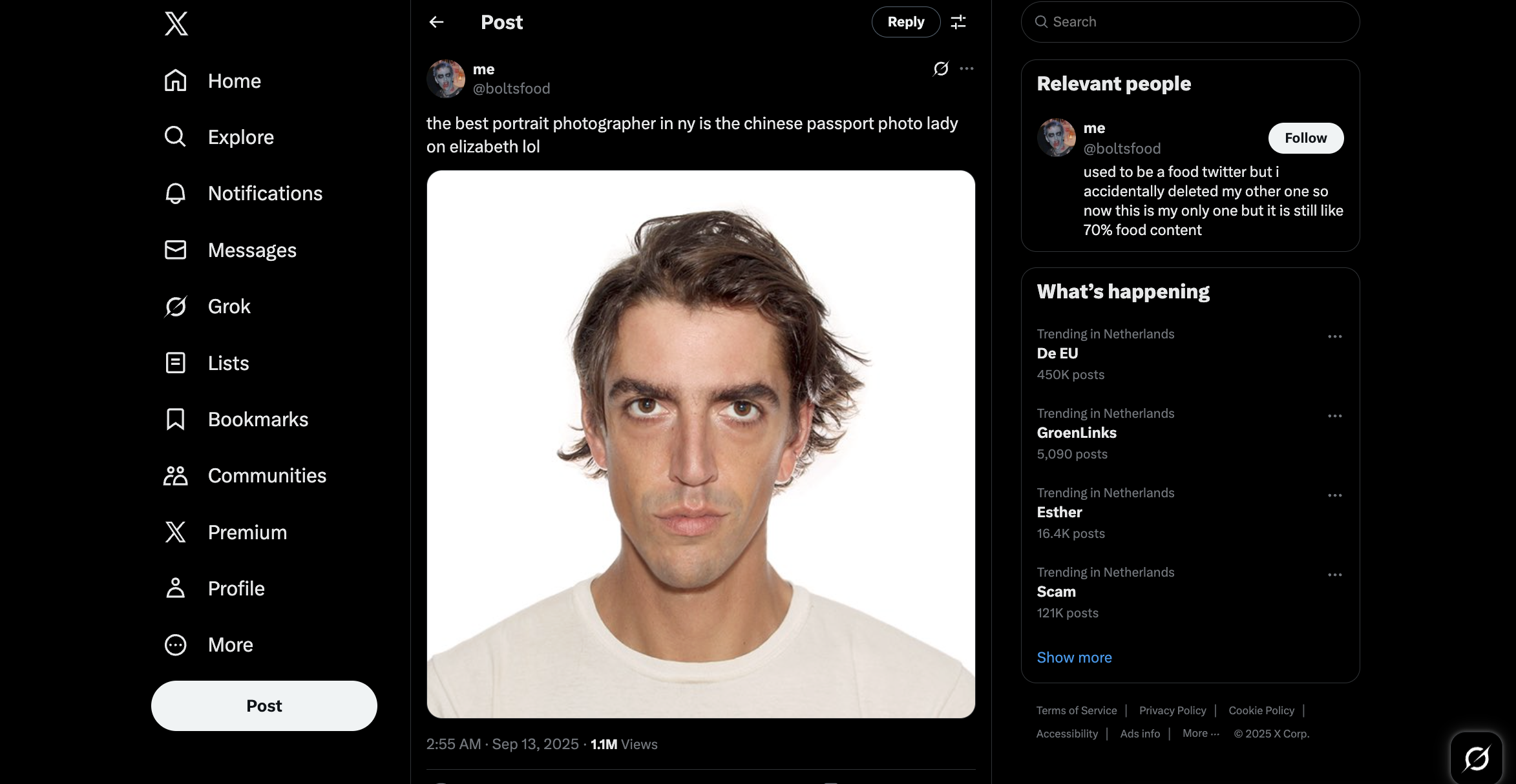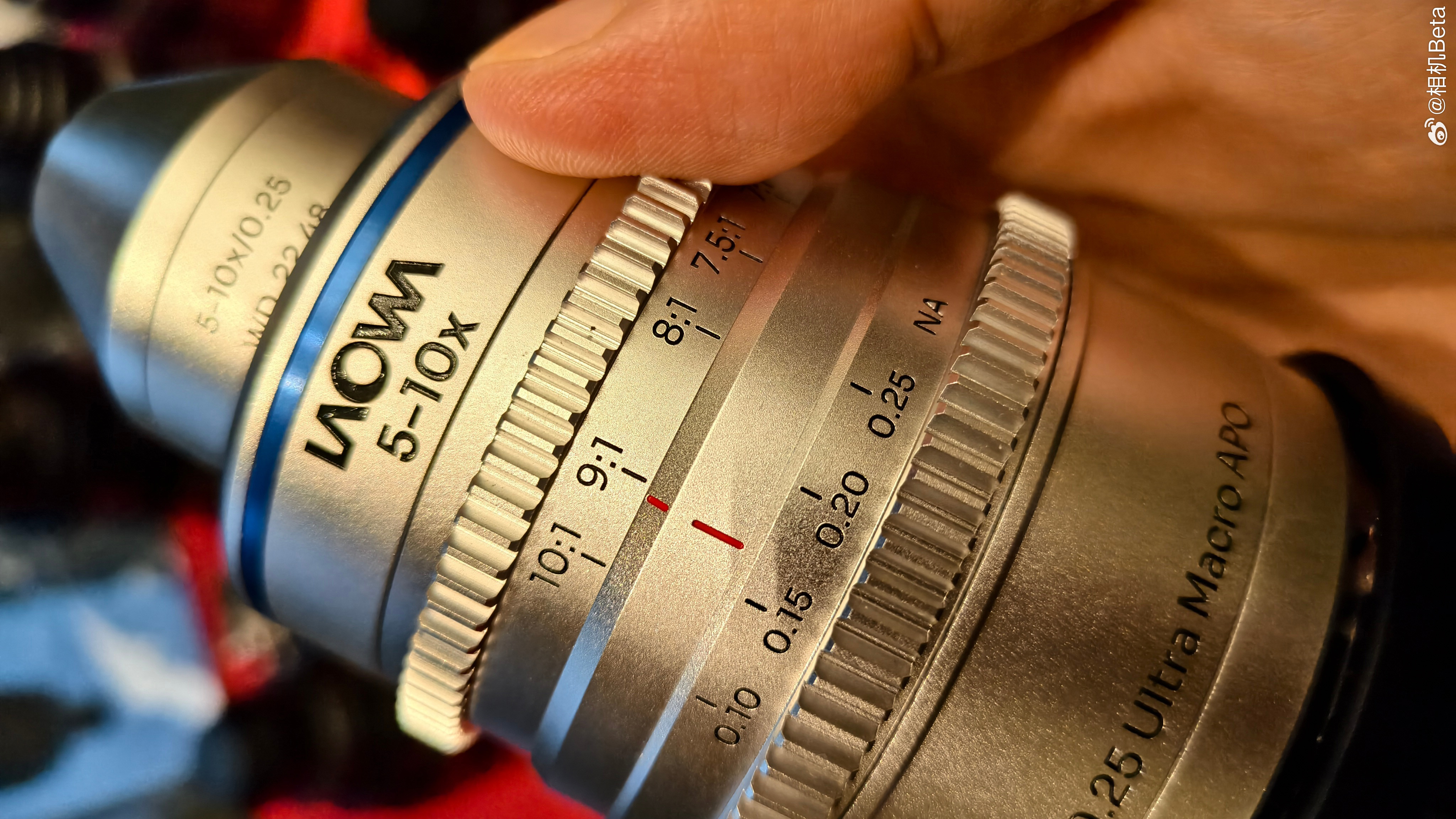
Honestly? When I first saw that a Chinatown passport photo had gone viral with over a million views, I laughed. A passport photo. The same bureaucratic mugshot we've all learned to dread. That went viral because it looked good?
But then I looked at it properly. And I got it.
Bolton Brown's portrait from Eliz Digital isn't extraordinary because it's fancy. There's no golden hour lighting, no carefully curated backdrop, no artful lens flare. It's shot against a white wall with a basic DSLR and an on-camera flash with a diffuser. The kind of setup that would make some portrait photographers weep into their Sigma Art lenses.
And yet somehow, it's better than most of the overproduced portraits clogging up our Instagram feeds.
The anti-aesthetic
Here's what's happening: as reported by Gothamist, Gen Z photographers are now queuing up in a tiny store in Chinatown and paying $25 cash to sit on a white plastic chair, to get a passport photo. Not because they need a passport, but because they want to a photo of what they actually look like.
Chunika Kesh, the woman behind the camera, isn't doing anything revolutionary. She's using basic portraiture principles: even lighting, slight head adjustment, shoulders back, eyes engaging just below the lens. She takes two or three shots, shows you the results, and you're done. No hour-long session, no outfit changes, no "let's try one more."
And that's precisely the point.
The best camera deals, reviews, product advice, and unmissable photography news, direct to your inbox!
What we've forgotten
I think we've collectively lost our minds about portrait photography. We've convinced ourselves that a good portrait requires thousands of pounds worth of gear, perfect weather, extensive retouching, and that elusive "vibe" that takes three mood boards to explain. We've turned portraiture into content creation, and in doing so, we've forgotten what portraits are actually for.
They're supposed to capture a person, not an aesthetic. Not a carefully constructed version of someone that's been focus-grouped for maximum engagement. Just a person, looking like themselves, on a particular day.
Kesh gets this instinctively. She's not trying to make anyone look "too pretty or whatever," as she puts it. She's just finding their best angle and capturing it honestly. The result is what one customer described as "this era of my life" – not performing it, just existing in it.
Why this matters
If you're a photographer reading this and feeling defensive, I get it. I'm not saying your atmospheric editorial work or your moody film photography is worthless. But maybe we should all be a bit more suspicious of our own BS.
The Gen Z influencers flooding into Eliz Digital aren't rejecting good photography. They're rejecting the Instagram-industrial complex that's convinced us more is always better. More gear, more presets, more drama, more everything. They're choosing something that feels real over something that's been engineered to look real.
There's something else happening here too. Young photographers are rediscovering that technical mastery of simple tools beats fancy equipment poorly used. Kesh's setup – a DSLR, a diffused flash, some styrofoam boards, a spray bottle and a comb – probably didn't cost an enormous sum. But she knows exactly what those tools can do.
And that's the profound bit. Not that a passport photo went viral, but that a generation of people looked at it and recognized excellence when they saw it. Even in the most unlikely of places.
Tom May is a freelance writer and editor specializing in art, photography, design and travel. He has been editor of Professional Photography magazine, associate editor at Creative Bloq, and deputy editor at net magazine. He has also worked for a wide range of mainstream titles including The Sun, Radio Times, NME, T3, Heat, Company and Bella.
You must confirm your public display name before commenting
Please logout and then login again, you will then be prompted to enter your display name.

